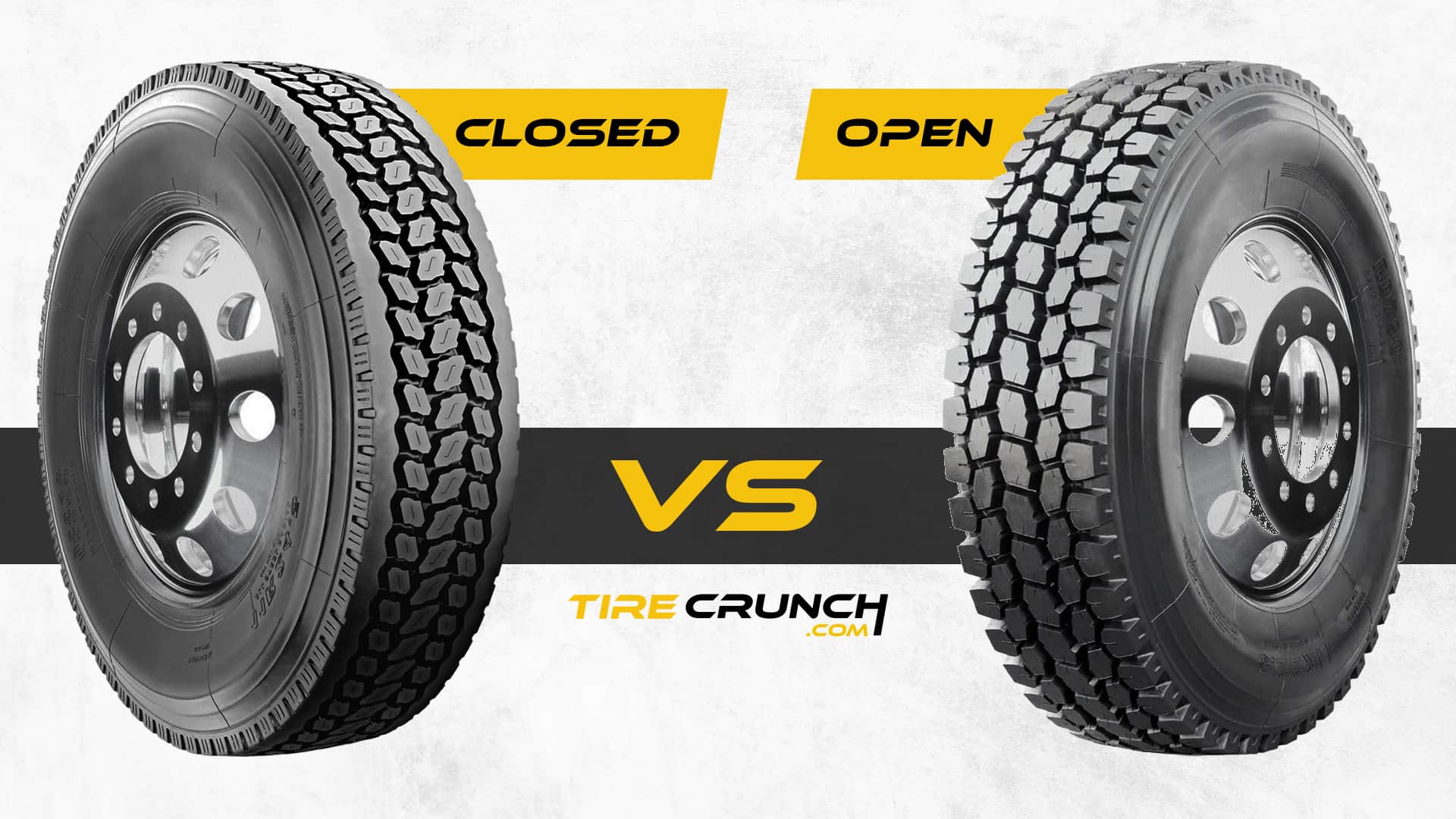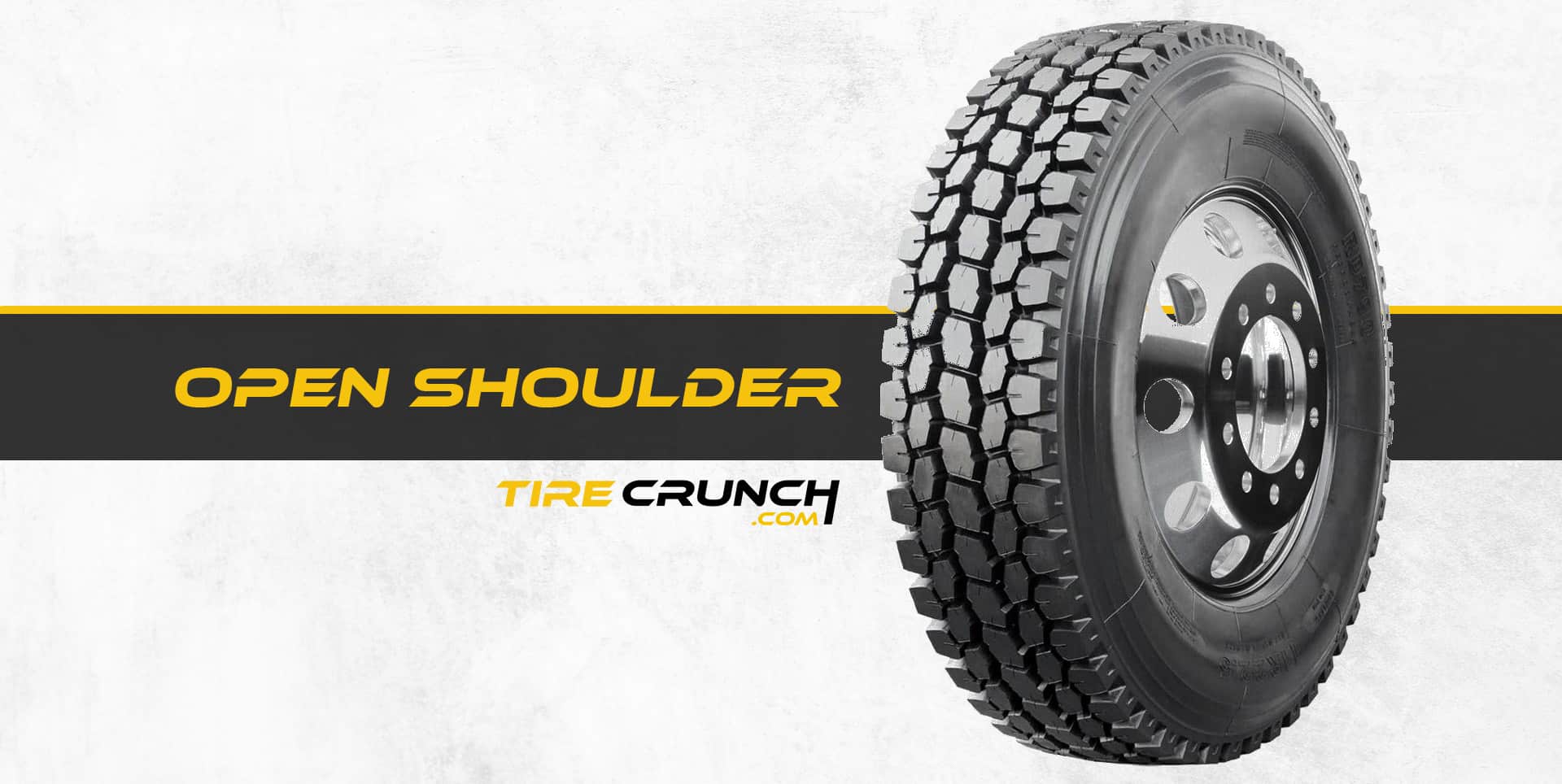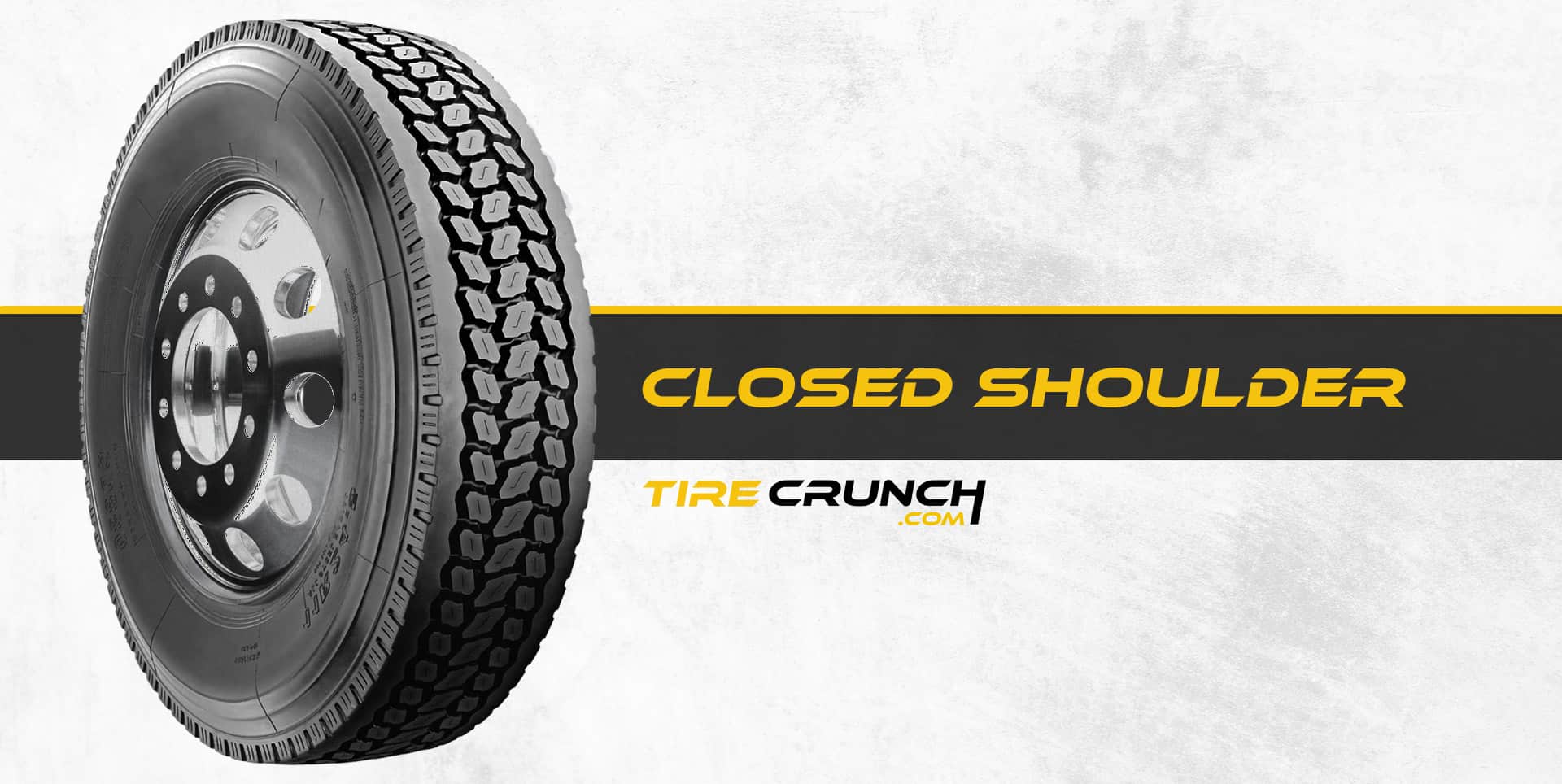Open Shoulder vs Closed Shoulder Tires

Open-shoulder and closed-shoulder tires are two common types of tire designs used in various vehicles. The primary difference between these tire designs is their tread pattern, which can have a significant impact on performance when driving in different conditions.
In this article, we’ll compare open-shoulder and closed-shoulder tires to help you make an informed decision about which type of tire is best suited to your specific driving requirements.
Open Shoulder Tires

Open shoulder tires feature a shallow tread depth with large, open gaps between the tread blocks. Open shoulder tires have several advantages over closed shoulder tires in certain driving conditions:
- Better traction on snow and ice: The aggressive tread pattern of open shoulder tires with large, wide grooves and channels allows for better grip and traction on snow and ice-covered roads.
- Improved handling on muddy or off-road conditions: The chunky tread pattern of open shoulder tires with large tread blocks provides better handling and traction on muddy or off-road surfaces.
- Better heat dissipation: The larger grooves and channels of open shoulder tires allow for better heat dissipation, which reduces the risk of tire damage due to overheating.
- Reduced risk of hydroplaning: The wide grooves and channels of open shoulder tires allow for better water evacuation, which reduces the risk of hydroplaning on wet roads.
The tread blocks are designed to provide better grip on uneven or loose surfaces such as dirt, mud or gravel roads. However, open shoulder tires typically have a shorter tread life than closed shoulder tires.
Closed Shoulder Tires

Closed shoulder tires feature a deep tread pattern with narrow, closed gaps between the tread blocks. Their advantages include:
- Better handling on dry roads: Closed shoulder tires have a continuous and smooth tread pattern, which provides more contact with the road surface. This results in better handling and stability on dry roads, especially at high speeds.
- Quieter ride: The continuous tread pattern of closed shoulder tires produces less noise compared to the chunky and aggressive tread pattern of open shoulder tires.
- Longer lifespan: Closed shoulder tires tend to have a longer lifespan compared to open shoulder tires due to their smoother tread pattern, which reduces wear and tear.
- Improved fuel efficiency: The continuous tread pattern of closed shoulder tires reduces rolling resistance, which improves fuel efficiency and saves money on gas.
The rubber composition of closed shoulder tires is firmer than open shoulder tires, making them more durable and providing a longer-lasting tread life. However, this decreased flexibility can make them less effective on uneven terrain.
Real-world scenarios where each tire performs best
Snow Driving
When driving in snowy conditions, the snow can get compacted in the tire’s tread grooves, reducing the tire’s ability to maintain contact with the road. Open shoulder tires with their wider grooves and channels can help prevent this compaction and improve grip by allowing the snow to be quickly expelled from the tread.
The lack of deep grooves and channels on closed shoulder tires can cause snow and slush to become packed into the tire’s tread, reducing the tire’s ability to maintain traction and grip on the road. This can lead to slipping and sliding, especially on steep hills or when turning.
Highway Driving
Closed shoulder tires are generally better for highway driving because they provide better stability and handling at high speeds. The closed tread pattern provides a larger contact patch with the road, which improves handling and reduces noise levels.
Open shoulder tires can be noisier on the highway and may provide less stability and handling performance at high speeds.
Off-Road Driving
Open shoulder tires are better suited for off-road and all-terrain driving because they offer more traction on loose and uneven surfaces. The larger voids between the tread blocks allow the tire to dig into soft surfaces like sand and mud, providing better grip and traction.
Closed shoulder tires can be less effective on rough terrain because they offer less traction and may have a tendency to slide on loose surfaces.
Wet Weather Driving
Both open shoulder and closed shoulder tires can be effective in wet weather, but open shoulder tires tend to perform better in heavy rain because the larger gaps between the tread blocks allow water to be expelled more easily. This reduces the risk of hydroplaning and improves traction on wet surfaces.
Closed shoulder tires can still provide good performance in wet weather, but may be more prone to hydroplaning on standing water due to the lack of gaps in the tread pattern.
